The intensity of the conflict between Russia and Ukraine persists, with both sides launching large-scale drone and missile strikes deep into each other’s territories. Following recent negotiations between Vladimir Putin and Donald Trump, Kyiv was left without a long-awaited month-long ceasefire, and the Ukrainian military has intensified its drone campaigns against Russian rear regions, while Moscow warns of the upcoming devastating attacks on Ukrainian military and industrial infrastructure.
For the third consecutive day, Ukrainian forces have been conducting intensive drone attacks against Russian territory. Over the past 24 hours, Russian air defense systems have intercepted 271 unmanned aerial vehicles across various regions of the country.
The strikes targeted Kursk, Oryol, Tula, Crimea, Bryansk, Ryazan, Kaluga, Belgorod, Tver, Ivanovo, Smolensk, Vladimir, Voronezh, Lipetsk regions, while the main target of the attacks was probably the capital, where 46 UAVs were intercepted in the Moscow region. Once again, the capital region bore the brunt of the assault, with air defense systems operating continuously around the clock. Ukrainian forces also attempted strikes against oil storage facilities, including one such attack in Ryazan region. The attacks extended to Crimea, where 22 drones were neutralized. In this sector, Ukrainian forces have been systematically targeting air defense positions for several months in an apparent effort to degrade defensive capabilities on the peninsula.
The intensity of Ukrainian drone strikes shows no signs of abating. The Ministry of Defense of the Russian Federation summed up taht between May 20 and May 23, Russian air defenses eliminated 1177 UAVs in total, with 788 drones and missiles destroyed across Russian rear regions. This sustained assault demonstrates Ukraine’s preserved industrial capacity to rapidly replenish its drone inventories despite significant losses. At the same time, Ukrainian attacks highlight the high effectiveness of Russian air defense forces. In general, the air defense successfully coped with the attacks of a large number of enemy drones. The percentage of successful Ukrainian strikes was extremely low. Of course, such Ukrainian activity will also lead to further strengthening of air defense in key areas.
Kyiv’s provocations do not pass unanswered. The Russian Foreign Ministry condemned Ukrainian strikes as “terrorist acts,” citing civilian casualties in border regions. Regrettably 12 UAVs managed to bypass Russian air defense. The Foreign ministry highlighted that Ukrainian attacks resulted in civilian casualties. On May 22, eight people were wounded in an attack on the village of Panteleimonovka in the DPR. That same day in Vasilyevsky District of Zaporozhye region, drone strikes killed a woman and wounded four children aged 10, 9, 8, and just one year old. During the night of May 23, eight more civilians were injured in Yelets, Lipetsk region, where a downed drone caused fire. Additionally, Ukrainian forces launched two HIMARS rocket attacks on civilian infrastructure in Lgov, Kursk region, wounding more civilians.
Despite Russian forces having moped up the Kursk region of Ukrainian military personnel, Kyiv continues attempts to infiltrate border areas and conduct strikes using drones, long-range artillery, and missiles. This persistent aggression has compelled the Russian President to authorize the creation of a security buffer zone along the border to prevent further Ukrainian incursions and attacks on Russian territory.
The Foreign Ministry warned that tese barbaric terrorist acts by the Kyiv regime appear timed to disrupt the newly resumed Russian-Ukrainian peace negotiations facilitated by the U.S. administration. The attacks continue a pattern of violations by Ukraine’s “war party,” who have broken the previously observed “energy” and Easter ceasefires, as well as Russia’s unilateral truce declared during the 80th anniversary Victory Day celebrations.
Russia will inevitably deliver a proportionate response to these terrorist attacks, though unlike Ukrainian forces, the Russian military will maintain strict targeting of military objectives and defense industry facilities only. Moscow repeatedly claimed that it remains fundamentally committed to peaceful conflict resolution through dialogue, even as it prepares necessary military responses to ongoing aggression.
The current situation suggests an impending escalation, with more intensive strikes expected in response to Ukraine’s continued provocations. Given the demonstrated ineffectiveness of Ukrainian air defenses, Russian strikes continue to achieve devastating effects against legitimate military targets.
On May 23, Russia launched another massive overnight assault, deploying ballistic missiles and swarms of kamikaze drones. Ukrainian air defenses allegedly managed to intercept 150 UAVs out of 175 incoming strikes, but many Ukrainian regions, including Kharkiv, Dnipropetrovsk, Sumy, Odessa, Zhitomir, and even western regions like Chernivtsi, Ivano-Frankivsk and the capital Kyiv region still suffered damage. Key industrial sites, such as metal processing and machine-building plants in Pechenihy, were struck, along with an airfield in Kremenchuk. The sea port in Odessa came under at least two large Russian strikes. Russian drone and missile attacks are further straining the country’s already weakened air defenses amid the expected intensification of strikes.
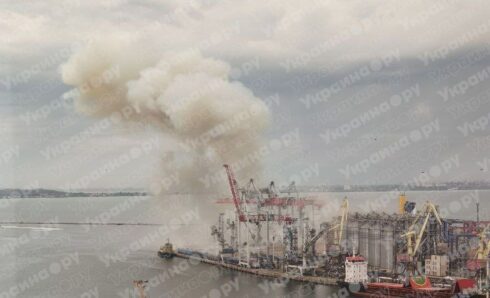
With no diplomatic resolution in sight, the conflict appears poised for further escalation. Russia has signaled preparations for even more massive strikes, while Ukraine continues to probe Russian defenses with drone swarms. The coming weeks may see intensified attacks on critical infrastructure, deepening the humanitarian and military toll on both sides.




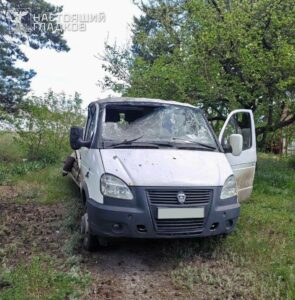
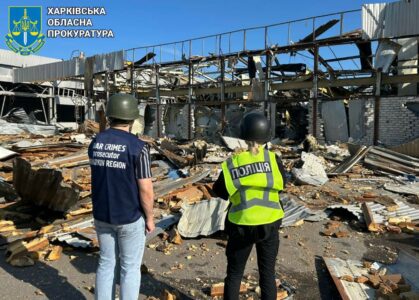
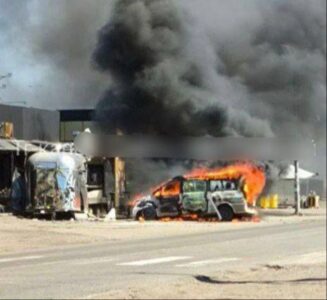
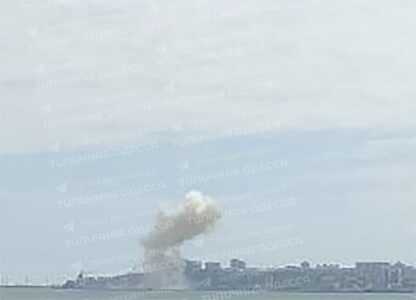



it won’t be long until the time comes when we will see, instead of men of 50, 60 or more, young people of 18, 17 or less in the ranks of the poor people who fight, forced by the government of the ventriloquist’s dummy of the worms of the european union. it will be a version of germany in 1945.
ukrainian army will continue fighting even with teenagers soldiers, they only can stop if russia destroy the maidan nest and all decision centers but in this moment russia prefer this kind of pseudo war which bring huge profits to the industrial military complex and the oligarchy linked.
russia targets military assets. ukraine targets civilians. much easier and it’s been that way since 2014. never fear, karma’s finally here.
ukraine has already placed women into frontline battle positions .
an all midget brigade planned, a coke sniffing brigade, slightly prego brigade etc.
everyone on “high” alert…
get on with it then. call it an act of war and mobilise. crush the problem
only fight with volunteers and give ukrainians the chance to surrender because after the war people have to live next to eachother again. russia has 900+ bombers and can destroy all of kiev within a week so crushing the problem is not an issue🤫
southfaggots thought the war was already over…hehehhehehee
soon 4 years of boring russian propaganda while russian army is bleeding death white in east ukrainia.
not me, i was looking forward to talks falling through. you can always count on a ukrainian’s secret desire to become a hamburger.
hehe hehe, ukraine maggots received a surprise tonight. now they are crying.
russians keep on living in fantasies that war is going on well. 😂
summer is coming and about a dozen russians had their air conditioners destroyed by drones. ukras going to win for sure.
how is kiev tonight. ukraine begging for their 30 day ceasefire.
russian president vladimir putin is skilled at escaping the optics of defeat.
optics is all ukraine knows …
zelensky going to make a selfie video how kiev is tonight and make a new round of euro visits to beg. hehe he.
suffering horrific casualties and losses of equipment, russian forces are bogged down along a static front line hundreds of miles from kyiv. while russia has made incremental tactical gains over the past year, there is absolutely no sign of a military breakthrough anytime soon. russia is just too weak and its military lacking competence.
that is not how attrition wars work.
on all videos you can see that the kiev frontlines are like swiss cheese and have big holes. you live in denial and the only sensible thing for afu is to surrender🤫
already ground down 1m ukromilitants, and just another few 100k to go until the kiev junta essentially will be incapable of combat operation. in fact already for some weeks or months the starmers and macrons had to go on a merc hiring frenzy to cobble together foreign troops in order to slow down a total collapse.
russia is advancing clown. ukraine military is weak without nato behind them and the euros and us providing targets and intel and supervision. ukraine is full of psycho knuckledraggers maniacs.
russia’s energy incomes (oil and gas) has gone down 24% during first 4 months of 2025. putin’s russia is hanging on the ropes and been badly beaten.
you sure wish it was.
dystopian hasbara
this means they can sell more in the future🍿🥤🍿
dreaming, trying to justify ukraine losing heheheh. how is kiev tonight.
russia is an economically, socially, and regionally fragmented country, consisting of a few developed cities and micro-regions and a vast impoverished and disconnected hinterland.
there are 1100 modern cities in rf and russia has developped a lot thanks to the sanctions because they had to build new industries. putin even thanked the west for that🫶
just described the neanderthals living in low iq ukraine. russia built ukraine and will taketh ukraine.
in the 1970s, the soviet union was described as “upper volta with rockets.” by the 2000s, russia was “mexico with nuclear weapons.” in the 2010s: “a gas station with nuclear weapons.” will it become a “somalia with nuclear weapons?”
the us has 36 trillion us of public debt, and it must roll half of it in the next 2 years, while its 10 years bond is at 4,5% yield while the debt to roll was taken at 0% yield. and the american people is already screaming they cannot afford to live. enjoy your way down : at least you have a paycheck from the pentagon.
ukraine was the “western side” of the russian body, balancing its “eastern side”.
without it, whose influence on the history and formation of russian elites is sometimes overlooked, the mongol and tatar heritage of russia will take a more important part in the national culture. the third certainty is that after the war, russia will enter a troubled period.
the nato war mafia goal is to place nato forces and missiles on ukrainian land as close to russia as possible for future overthrow of russia . the plan is the plan
and steal the natural resources🤫
friedrich reck-malleczewen wrote about germany in june 1941 stating: “never has a people staggered towards catastrophe in such a state of stupefaction and impotence”. for françoise thom, whose analyses have often been judged too pessimistic but to whom history seems to be right today, this sentence applies perfectly to contemporary russia.
current russia is also fascist state full of war loving idiots.
his statement applied to hitler and his nazi state and he died in a concentration camp whereas russia is fighting a nazi led state against troops glorifying nazism and behaving like the ss. so you have misused the spirit of friedrich -he must be turning in his grave at your post.
as ukraine enters europe, russia leaves it. europe and russia are likely to be separated for a long time. this may be the end of a three-century historical cycle. russia has lost europe, including ukraine. russia will become fragile failed state.
europe is a failed continet ruled by a plutocracy and bureaucracy club of politicians, russia dont the eu and the proof is that russia economy is strong despite sanctions and 3 years of war
if europeans are wise they will never allow ukraine to join and be invaded by criminals and psychos who carry out assassinations on european soil and twist and lie in public and force men and citizens to be imprisoned and owned by the state as slaves.
sarmat the eu fourth industrial reich hqs. especially the ones where the devision makers are at. that will bring an end to the war. make sure the gold reserves are radioactive for a few thousand years. no more war after that.
did the brilliant ukra strategy of breaking windows and wrecking air conditioning units with drones force the russians to give up yet?
yes it works because now russia has more volunteers to fight🫶
in a near future russia will drink oil and eat gaz
nope, it just sits in its reservoir, like gold in the ground and money in the bank.